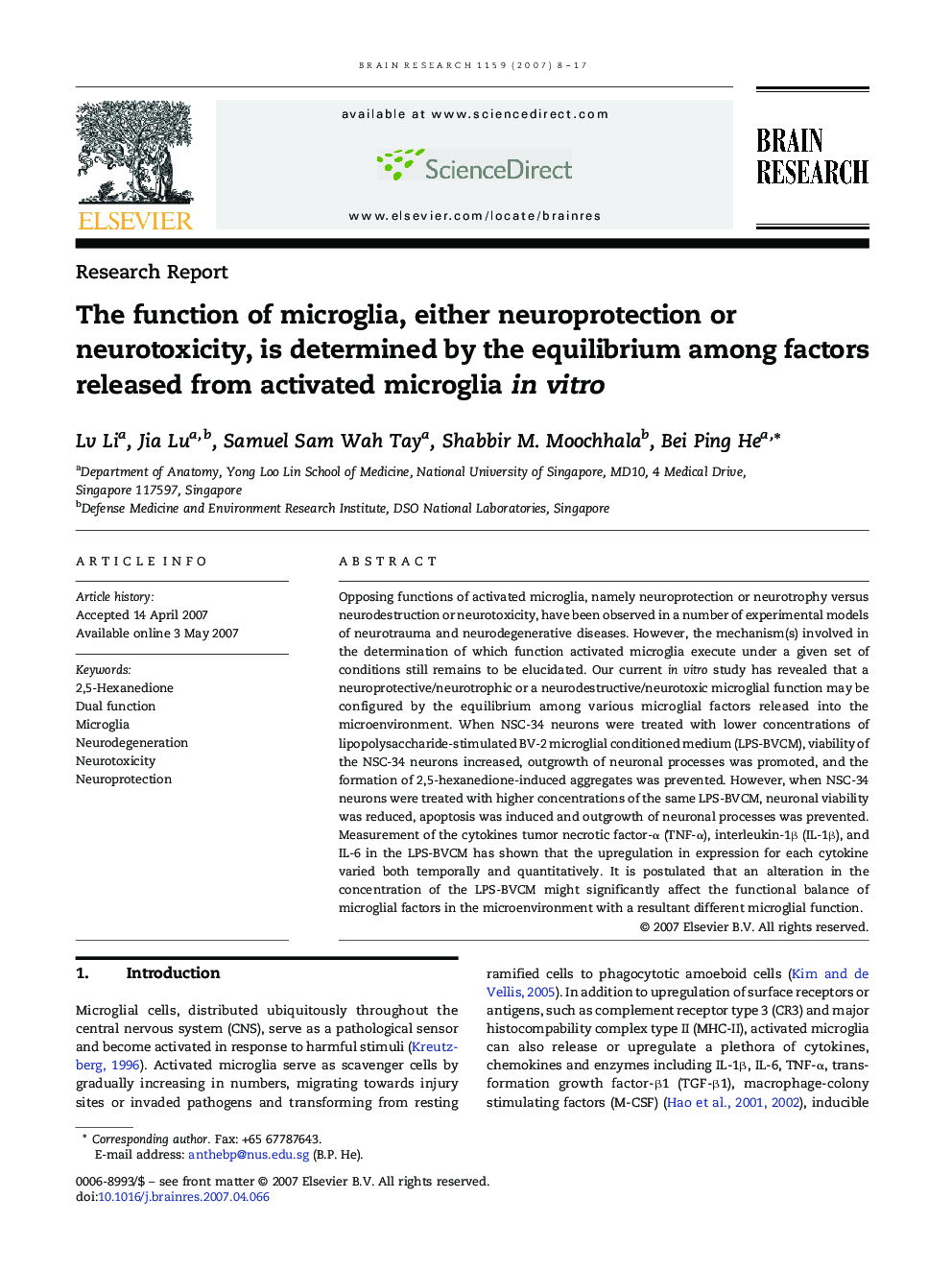| Article ID | Journal | Published Year | Pages | File Type |
|---|---|---|---|---|
| 4330892 | Brain Research | 2007 | 10 Pages |
Opposing functions of activated microglia, namely neuroprotection or neurotrophy versus neurodestruction or neurotoxicity, have been observed in a number of experimental models of neurotrauma and neurodegenerative diseases. However, the mechanism(s) involved in the determination of which function activated microglia execute under a given set of conditions still remains to be elucidated. Our current in vitro study has revealed that a neuroprotective/neurotrophic or a neurodestructive/neurotoxic microglial function may be configured by the equilibrium among various microglial factors released into the microenvironment. When NSC-34 neurons were treated with lower concentrations of lipopolysaccharide-stimulated BV-2 microglial conditioned medium (LPS-BVCM), viability of the NSC-34 neurons increased, outgrowth of neuronal processes was promoted, and the formation of 2,5-hexanedione-induced aggregates was prevented. However, when NSC-34 neurons were treated with higher concentrations of the same LPS-BVCM, neuronal viability was reduced, apoptosis was induced and outgrowth of neuronal processes was prevented. Measurement of the cytokines tumor necrotic factor-α (TNF-α), interleukin-1β (IL-1β), and IL-6 in the LPS-BVCM has shown that the upregulation in expression for each cytokine varied both temporally and quantitatively. It is postulated that an alteration in the concentration of the LPS-BVCM might significantly affect the functional balance of microglial factors in the microenvironment with a resultant different microglial function.
